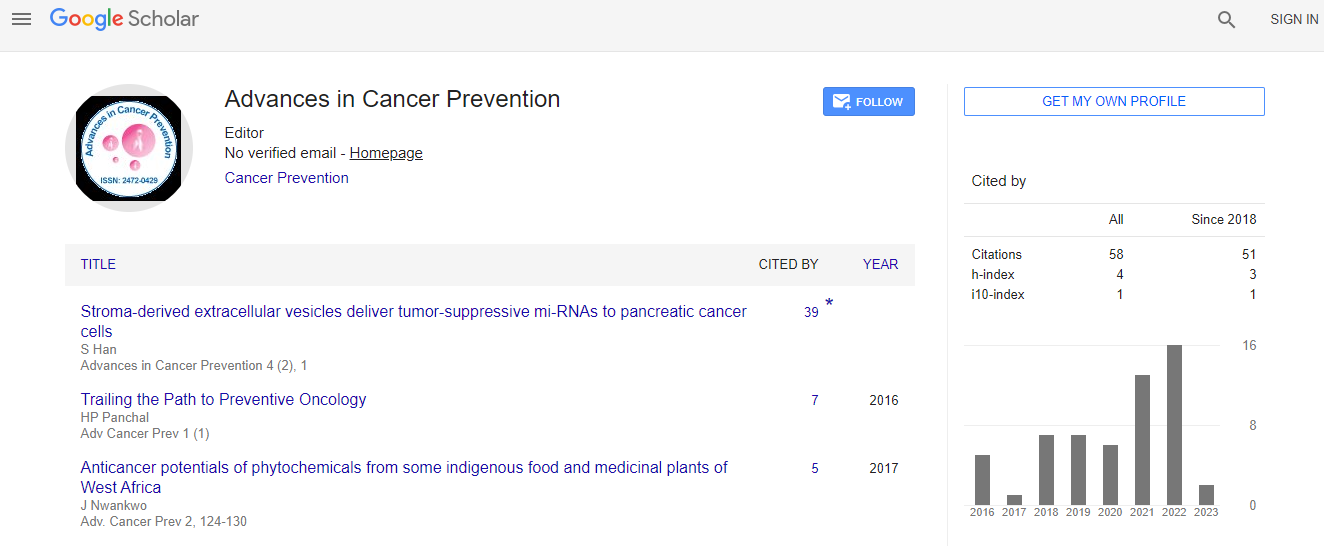Research Article
Uterine Pathology in Hysterectomies Performed for Treatment of Pelvic Organ Prolapse
Foust-Wright CE, Pilliod RA, Weinstein MM, Johnson AM, Batalden RP and Pulliam SJ*Department Obgyn, Division of Female Pelvic Medicine and Reconstructive Surgery, 55 Fruit Street, Yawkey 5, Boston, MA 02114, USA
- *Corresponding Author:
- Samantha Pulliam
Massachusetts General Hospital, Department Obgyn
Division of Female Pelvic Medicine and Reconstructive Surgery
55 Fruit Street, Yawkey 5, Boston, MA 02114, USA
Tel: 617-724-9014
Fax: 617-726-4267
E-mail: spulliam@partners.org
Received date: October 05, 2015 Accepted date: October 21, 2015 Published date: November 05, 2015
Citation: Foust-Wright CE, Pilliod RA, Weinstein MM, Johnson AM, Batalden RP, et al. (2015) Uterine Pathology in Hysterectomies Performed for Treatment of Pelvic Organ Prolapse. Adv Cancer Prev 1:101. doi:10.4172/acp.1000101
Copyright: © 2015, Pulliam, et al. This is an open-access article distributed under the terms of the Creative Commons Attribution License, which permits unrestricted use, distribution, and reproduction in any medium, provided the original author and source are credited.
Abstract
Objective: To determine the rate of uterine pathology in hysterectomies performed during surgery for treatment of uterovaginal prolapse.
Methods: In this retrospective cohort study, we evaluated all patients undergoing hysterectomy during treatment of uterovaginal prolapse at a single academic institution from 2008 to 2013. Demographics, risk factors for uterine malignancy, operative data, and pathology reports were reviewed. Patients with history of concerning uterine pathology were excluded.
Results: 339 subjects were included; none were excluded. Mean age of patients undergoing hysterectomy was 63.2 years with 85.5% post-menopausal. Mean BMI was 27 kg/m2 and mean uterine weight was 71 grams. Abnormal pathology was identified in 0.8% (3/339) subjects: complex atypical hyperplasia (1), grade 1 endometrial adenocarcinoma (1), and low-grade B-cell lymphoma (1). 49% of specimens contained fibroids and no sarcomas were identified. Total hysterectomy was performed in 88%. 12% (40/339) underwent supracervical hysterectomy with morcellation. One specimen with abnormal pathology (complex atypical hyperplasia) was morcellated. Patients undergoing procedures requiring morcellation were younger (57.3 vs. 63.3, p=.001, 95%CI 2.52, 9.52) and less likely to be postmenopausal (69% vs. 88%, p=.021, 95%CI .067, .300). Risk factors for uterine malignancy were not different between groups.
Conclusions: We found a low rate of incidental uterine pathology in hysterectomy specimens from prolapse surgery. Half of uterine specimens had leiomyomas. Specimens with fibroids had a higher mean weight than leiomyoma-free specimens. Risk factors for cancers among patients undergoing morcellation versus intact removal were not different. Further study is needed to clarify the role of morcellation in this low-risk population.

 Spanish
Spanish  Chinese
Chinese  Russian
Russian  German
German  French
French  Japanese
Japanese  Portuguese
Portuguese  Hindi
Hindi 